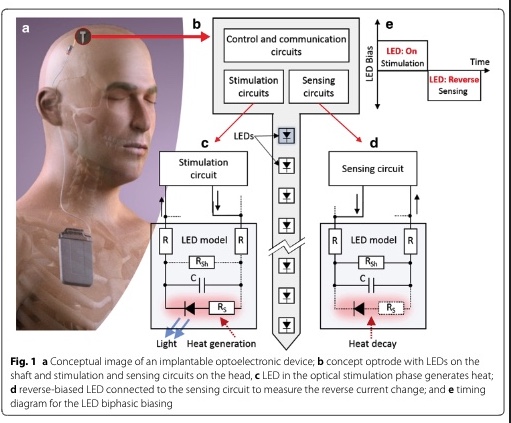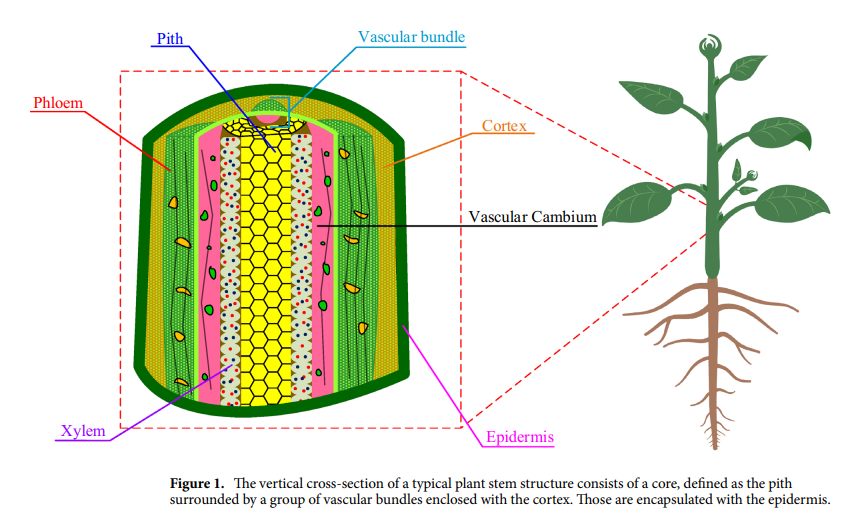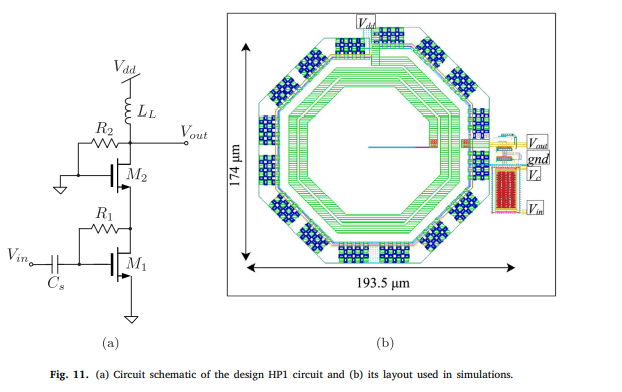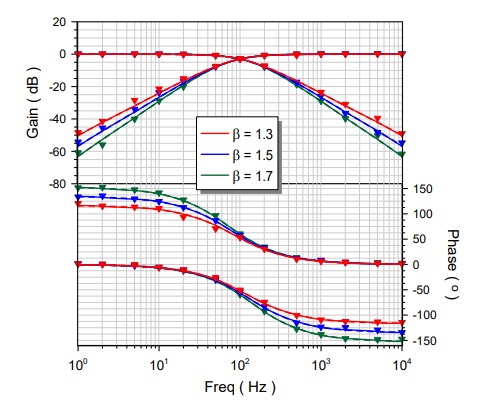
A current-mode system to self-measure temperature on implantable optoelectronics
Background: One of the major concerns in implantable optoelectronics is the heat generated by emitters such as light emitting diodes (LEDs). Such devices typically produce more heat than light, whereas medical regulations state that the surface temperature change of medical implants must stay below + 2 °C. The LED's reverse current can be employed as a temperature-sensitive parameter to measure the temperature change at the implant's surface, and thus, monitor temperature rises. The main challenge in this approach is to bias the LED with a robust voltage since the reverse current is strongly and nonlinearly sensitive to the bias voltage. Methods: To overcome this challenge, we have developed an area-efficient LED-based temperature sensor using the LED as its own sensor and a CMOS electronic circuit interface to ensure stable bias and current measurement. The circuit utilizes a second-generation current conveyor (CCII) configuration to achieve this and has been implemented in 0.35 μm CMOS technology. Results: The developed circuits have been experimentally characterized, and the temperature-sensing functionality has been tested by interfacing different mini-LEDs in saline models of tissue prior to in vivo operation. The experimental results show the functionality of the CMOS electronics and the efficiency of the CCII-based technique with an operational frequency up to 130 kHz in achieving a resolution of 0.2 °C for the surface temperature up to + 45 °C. Conclusions: We developed a robust CMOS current-mode sensor interface which has a reliable CCII to accurately convey the LED's reverse current. It is low power and robust against power supply ripple and transistor mismatch which makes it reliable for sensor interface. The achieved results from the circuit characterization and in vivo experiments show the feasibility of the whole sensor interface in monitoring the tissue surface temperature in optogenetics. © 2019 The Author(s).



